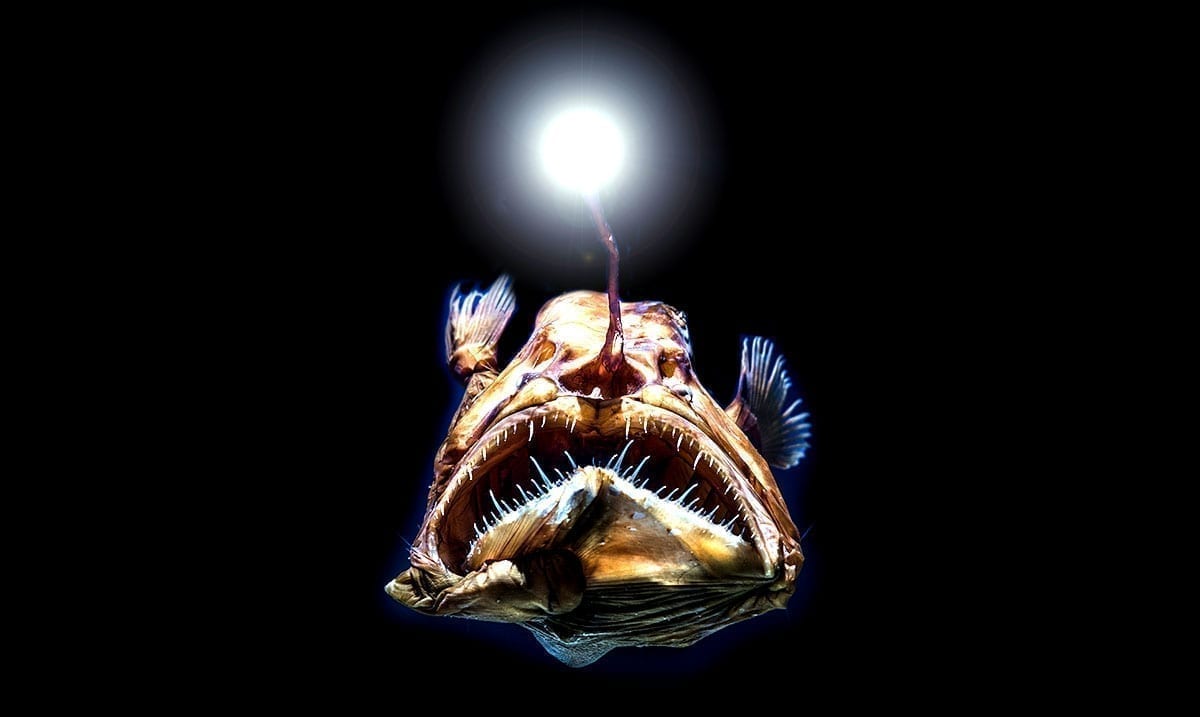The deeper you go into the sea the more you’ll find and well, some things even we don’t know about could be present out there. The oceans of our world hold lots of mysteries, that’s for sure.
As of late, some interesting footage has been circling again of deep-sea creatures and it’s an interesting video, that’s for sure. Using a rover to get a view of what was happening in the water it seems one shark who was trying to munch on a swordfish with several others ended up being eaten itself. Sure, seeing sharks eat is something we see a good bit but once this deep-sea fish comes forth things go in a direction we are not used to being able to experience.
Now, this footage was taken back in 2019 and posted that year in June. NOAA posted it and well, it’s quite worth the watch. I have seen it several times and still take the time to stop and watch when I see it pop up somewhere.
NOAA wrote as follows on this footage:
The scene played out as D2 was running a straight-line transit up a small topographic rise originally thought to be a shipwreck at about 450 meters (1,476 feet) of depth. As D2 flew over manganese-encrusted rocks, corals, sponges, as well as a diversity of other invertebrates and small shelter-seeking fishes, a few small sharks appeared. Then, a group of sharks in what looked to be a feeding frenzy appeared in the dim reaches of D2’s lights. Upon closer approach, the lights revealed a dead swordfish, approximately 2.5 meters (8 feet) in length, lying on the seafloor with at least 11 sharks circling and feeding “vigorously” on the swordfish’s skin and muscle tissue.
The swordfish was clearly recently deceased, perhaps only by a few hours, given the condition of its body and the rapid disappearance of its flesh into the stomachs of the sharks. The cause of the death of this majestic animal is unclear, perhaps owing to age, disease, or some other injury. There was no visible hook or trail of fishing line suggesting this was a lost catch. However, any type of injury would have been masked by the massive damage caused by hundreds of shark bites.
The sharks represent two species of deep-sea dogfish from the family Squalidae. The smaller and more numerous animals are now known as Genie’s dogfish, a species only described in 2018, and named in memory of the famous shark scientist Dr. Genie Clark – the “Shark Lady” of Mote Marine Laboratory. At least two of the larger sharks are roughskin dogfish. Both species occur in deep waters along our continental margin, at depths from approximately 213-610 meters (700-2,000 feet). The large bony fish (not a cartilaginous fish like sharks), is a wreckfish, also a deep-sea species.
Most noteworthy is that they all likely traveled from some distance to feed on the swordfish, a large “food fall.” Sinking phytoplankton, zooplankton, and small dead fish are more common pathways of moving organic carbon into the deep sea, but food falls also consist of big pelagic species, including whales.
Equally interesting is observing the wreckfish ambush a small dogfish. Using the ROV for cover, it demonstrated the ability of large predatory fishes to feed on smaller sharks. The wreckfish appears unable to feed on the swordfish directly itself, but by joining the sharks, it was able to feed on an animal that was.
Normally we don’t see any deep-sea sharks in a group or aggregation, unless there is some nearby patch of food. As relatively small apex predators, they spend a great deal of time searching for prey. When a large food fall occurs, like a 250-plus pound swordfish, the ability to detect and locate the food, and then maximize food intake, is the key to growth and survival.
I know, it’s not a group of enormous sharks or anything like that but it does really show us a side of nature that we don’t think about. While a lot of people fear sharks, there are things out there that consider sharks’ meals. I for one think that the oceans of our world are well worth exploring, who knows what we may find the deeper we go. To see this footage for yourself take a look at the video below.

